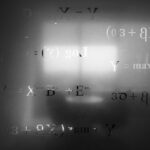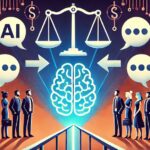In the early 20th century, the foundations of mathematics and logic were undergoing significant transformations. Mathematicians sought to establish a comprehensive and consistent framework for all mathematical truths, a goal inspired by David Hilbert’s program to formalize mathematics. However, in 1931, Austrian logician Kurt Gödel revolutionized the field with his Incompleteness Theorems, which demonstrated that within any sufficiently powerful axiomatic system, there exist true mathematical statements that cannot be proven within the system itself. Gödel’s work not only shattered the dream of a complete and consistent mathematical framework but also had profound implications for philosophy, computer science, and artificial intelligence.
Before Gödel, mathematical logic was dominated by Hilbert’s formalist program, which aimed to prove that mathematics was both complete and consistent. The goal was to establish a finite set of axioms from which all mathematical truths could be derived using formal rules of inference. However, lurking beneath this endeavor was an underlying paradox: could a system prove its own consistency without falling into contradiction? Gödel answered this question in the negative with his groundbreaking theorems, undermining the formalist vision and reshaping mathematical philosophy.
Gödel’s Incompleteness Theorems consist of two main parts.
First Incompleteness Theorem: In any consistent formal system that is capable of expressing basic arithmetic, there exist true statements that cannot be proven within the system.
Second Incompleteness Theorem: No such formal system can prove its own consistency.
To establish these results, Gödel ingeniously constructed a method known as arithmetization of syntax, whereby mathematical statements and proofs were encoded as natural numbers, a technique now known as Gödel numbering. By representing logical statements numerically, Gödel demonstrated that self-referential paradoxes could emerge within arithmetic itself, akin to the famous liar paradox (e.g., “This statement is false”).
Technical Overview of Gödel’s Proof
The heart of Gödel’s proof lies in the construction of a mathematical statement that essentially asserts, “This statement is not provable within the system.” If the statement were provable, the system would be inconsistent, contradicting its assumed consistency. Conversely, if the statement were unprovable, it would still be true, demonstrating the system’s incompleteness. This self-referential trick, achieved through formalized diagonalization, a mathematical technique used to construct self-referential or paradoxical statements , is analogous to Cantor’s diagonal argument and Turing’s Halting Problem.
To elaborate, Gödel assigned each symbol, formula, and proof sequence a unique numerical code (Gödel number). He then formulated a statement G such that:
- If G is provable within the system, the system is inconsistent.
- If G is not provable, then G is true but unprovable, demonstrating incompleteness.
This proof technique revealed the inherent limitations of formal systems and irrevocably altered the landscape of mathematical logic.
Implications for Mathematics and Logic
First, they demonstrated that Hilbert’s goal of establishing a complete and consistent foundation for mathematics was fundamentally impossible. Gödel’s findings ignited debates about mathematical truth, with Platonists asserting that mathematical truths exist independently of formal systems. Any sufficiently powerful system capable of expressing arithmetic must inevitably contain statements that are true but unprovable within the system itself.
Gödel’s work also influenced Alan Turing’s development of the Halting Problem, which revealed fundamental limits on computation. Turing proved that no algorithm can universally determine whether a given program will halt, reinforcing the inherent constraints of computational systems. In the realm of artificial intelligence, Roger Penrose has argued that Gödel’s results suggest human cognition surpasses mechanistic computation, challenging the assumptions of strong AI.
Misinterpretations
Despite their rigor, Gödel’s Theorems are often misunderstood. Some misinterpret them as proving that all knowledge is uncertain or that scientific inquiry is futile, which is an overextension. In reality, Gödel’s results apply to formal mathematical systems and do not imply that mathematics is unreliable—rather, they delineate its scope and limits. Additionally, claims that Gödel’s Theorems disprove artificial intelligence are controversial, as they hinge on interpretations of consciousness and computability.
Kurt Gödel’s Incompleteness Theorems mark one of the greatest intellectual achievements of the 20th century, profoundly altering our understanding of mathematics, logic, philosophy, and computer science. By proving that no formal system can be both complete and consistent, Gödel shattered the dream of a perfect mathematical foundation, instead revealing the inherent richness and depth of mathematical truth. His work continues to inspire new questions and discoveries, reminding us that the pursuit of knowledge, while constrained by inherent limitations, remains an endless and fascinating journey.








